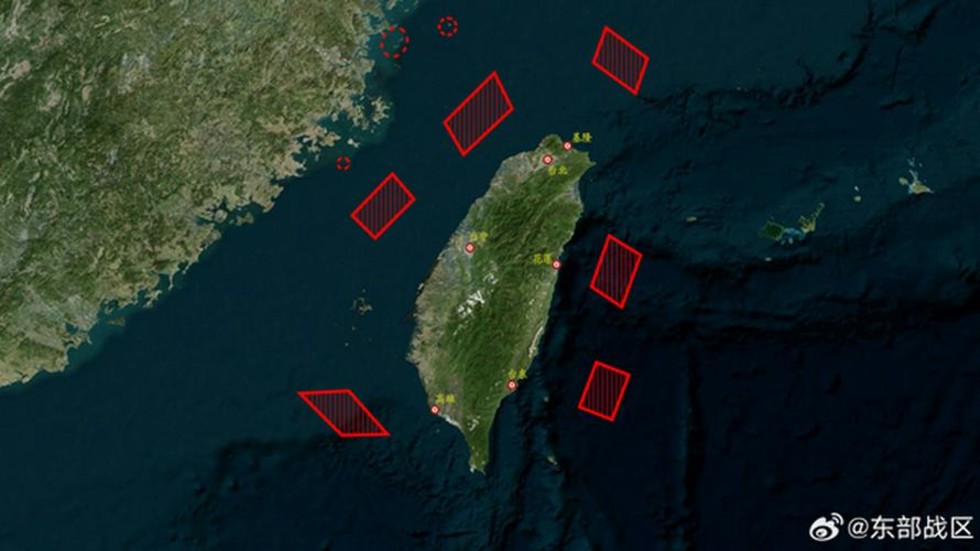In a show of military strength, Beijing has initiated a series of joint exercises conducted by the People’s Liberation Army (PLA) around Taiwan. Announced by Senior Captain Li Xi, a spokesperson for the PLA Eastern Theater Command, these exercises aim to enhance the PLA’s capacity to operate as a unified force while also sending a direct warning to Taiwanese independence advocates. The drills, which are dubbed “Joint Sword-2024B,” will incorporate elements from the army, navy, air force, and rocket forces. Scheduled to begin on October 14, these mock operations will take place across the Taiwan Strait and in various strategic locations surrounding the island. The PLA indicates that the exercises will involve a wide array of maneuvers, including sea-air combat-readiness patrols, blockades of vital ports, and assaults against designated maritime and terrestrial targets, all aimed at demonstrating the PLA’s preparedness and joint operational capabilities.
Li Xi emphasized that these military exercises serve as a robust warning against the push for Taiwanese independence. He framed the operations as essential for safeguarding China’s sovereignty and maintaining national unity. The drills are unfolding amidst heightened tensions fueled by recent statements from Taiwanese leader Lai Ching-te, who continues to assert Taiwan’s autonomy from Chinese rule. In response to these provocations, the Taiwanese Defense Ministry reported active military engagements, including the operation of 25 PLA aircraft and seven naval vessels in proximity to Taiwan. Moreover, Taipei has scrambled its own aircraft and naval vessels to counter China’s maneuvers, signifying a swift military response to Beijing’s assertive military posturing.
The timing of these military exercises comes on the heels of criticism from the Chinese Foreign Ministry regarding Lai’s comments asserting that Taiwan operates independently of Beijing. Speeches from Taiwanese leadership that challenge China’s claims over Taiwan have sparked intense backlash in Beijing, with officials accusing Lai of deliberately escalating tensions for his political gain. In previous years, Chinese military drills had been characterized in a similar context, particularly following Lai’s inauguration, where the PLA used military drills as a form of admonishment against separatist sentiments. The series of exercises showcase China’s ongoing strategy to address perceived threats from Taiwan, which it views as a rebellious province that must ultimately be brought under its control.
Taiwan’s complex status has elicited varying levels of recognition on the global stage, with only a handful of countries acknowledging it as a sovereign state. Its political history can be traced back to the aftermath of the Chinese Civil War in 1949 when the remnants of the Kuomintang government retreated to the island following their defeat by Communist forces. Since that time, Taiwan has operated in a state of de facto independence, fostering its own government and military apparatus. Despite its autonomy and self-governance, Taiwan remains at the center of the geopolitical contest between the United States and China, with the latter steadfastly upholding the One-China principle.
Under the One-China principle, Beijing maintains that Taiwan is an inalienable part of China, and while it expresses a preference for peaceful unification, it has not ruled out the use of force to prevent Taiwan from declaring formal independence. High-profile rhetoric from both sides continues to stoke tensions, as Taiwan reinforces its defense capabilities in response to China’s military expansion and assertiveness in the region. The ongoing exercises conducted by the PLA are perceived not just as a show of force but as part of a coordinated strategy to ensure that Taiwan remains firmly under the umbrella of Chinese sovereignty. This sentiment is accompanied by the belief that external support for Taiwan’s independence aspirations could trigger severe repercussions.
In summary, the PLA’s current military drills around Taiwan mark a critical juncture in cross-strait relations, underlining the underlying tensions that have been exacerbated by Taiwan’s ongoing pursuit of self-determination. The coordinated military operations signify China’s readiness to confront any challenges to its territorial claims, exploiting drills as both a deterrent and a means of projecting power. The specter of military confrontation looms large, influenced by the intricacies of Taiwan’s historical relationship with mainland China and bolstered by recent developments in leadership rhetoric on both sides. As the geopolitical landscape continues to evolve, the trajectory of Taiwan’s future remains uncertain, heavily influenced by the actions and policies of both Beijing and Taipei.

